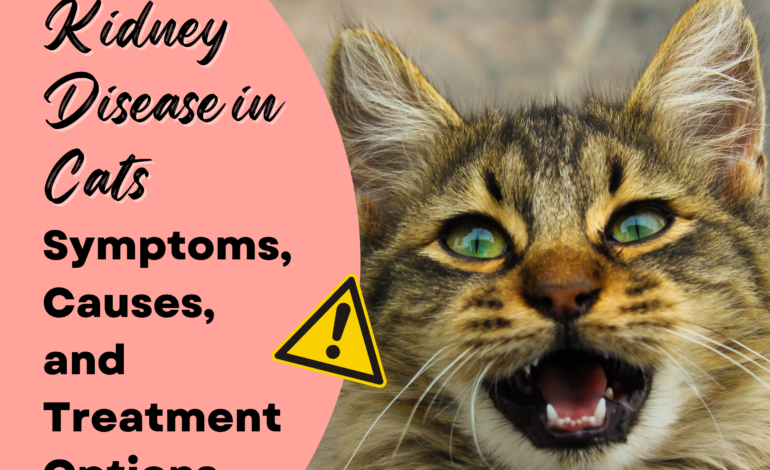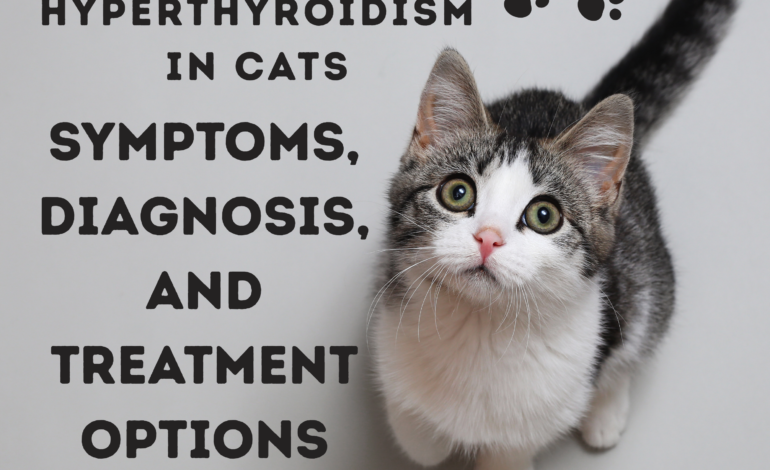Kidney Disease in Cats: Symptoms, Causes, and Treatment Options

Imagine your cat’s kidneys as tiny superheroes, quietly working around the clock to keep their body balanced and healthy. These hardworking organs filter out waste, regulate hydration, and support vital functions we often take for granted. But when kidney health starts to decline, problems can sneak up quickly. Kidney disease in cats is one of the most common conditions—affecting up to 40% of cats over the age of 10, and as many as 80% of cats over the age of 15.(1) It’s often called a “silent illness” because the early signs of kidney disease in cats can be so subtle. Spotting those changes early and getting treatment can make all the difference, giving your feline friend more happy, comfortable years by your side.
What Is Kidney Disease in Cats?

And think of your cat’s kidneys as silent multitaskers — not only do they clear the blood of toxins but also play a role in maintaining fluid and electrolyte balance, while regulating the blood pressure and red blood cell production. If I feel it in my kidneys, the whole body feels it.
One of two things must occur for this to happen:
- Acute Kidney Injury (AKI): it hits you hard and fast, frequently because of an introduction of toxins (such as lilies or antifreeze), a blockage or severe dehydration. Some cats rebound if they are treated quickly.
- Chronic Kidney Disease (CKD): gradual can be slow and steady, especially for older cats. Nearly one in three cats over 10 will get CKD, but with proper care, it doesn’t need to be a tragedy — many cats live very happily for years after diagnosis.
And here’s the part most pet parents don’t hear: CKD doesn’t just “come with age.” Things like untreated dental disease, high blood pressure and repeated episodes of dehydration can all speed it along. That’s where prevention counts — fresh water fountains, regular dental care and early screening with today’s modern tests like SDMA can snare trouble long before your cat makes a house call.
Symptoms of Kidney Problems in Cats – with Numbers & Evidence

Cats are masters at masking illness. By the time clear physical symptoms of kidney disease emerge, they often have already lost a lot of kidney function. Here are warning signs + what research tells us.
Key Signs & What Research Shows
- Drinking more & peeing more (polydipsia & polyuria): Often one of the first symptoms noticed. In UK primary-care data, about 66.6% of cats diagnosed with CKD already showed clinical signs at diagnosis. What many owners miss is that increased water intake or litter-box changes may occur before that official diagnosis. (2)
- Loss of appetite & weight loss: Poor appetite is very common. Cats in early IRIS stages often eat less or become picky, which leads to slow weight loss over time (sometimes the first “visible” sign). Studies indicate that CKD in cats >10 years old affects 30–40%, showing age is a major risk factor. (3)
- Lethargy & weakness: Because toxins normally filtered by healthy kidneys build up, cats feel “off.” In one large survey, many cats with CKD had nonspecific signs like reduced activity well before more obvious ones. (Exact percent for lethargy alone varies).
- Vomiting, nausea, and diarrhea: These GI symptoms are common. Although exact numbers are less well-quantified in general cat populations, multiple studies of CKD cats report frequent vomiting and nausea, especially in moderate to advanced stages.
- Poor coat quality, bad breath, mouth ulcers/drooling: Often overlooked. For example, one study of biomarkers including SDMA showed elevated values before creatinine rises; by then, cats often already have signs like weight loss, dull coat, bad breath, etc.
- Behavioral changes (hiding, depression): Research shows that many cats with CKD are brought in only after owners notice changes in behavior or energy — not just physical signs. In UK data, behavioral or nonspecific signs (lethargy, appetite loss) are among the more common triggers for diagnosis.
Unique insight: Even small habits at home — like weighing your cat monthly, tracking water bowl refills, or noticing litter clump size — can reveal kidney problems months earlier. Early tests like SDMA can also detect kidney decline before traditional bloodwork
What Causes Kidney Disease in Cats?

Kidney disease can creep in slowly or appear suddenly after a crisis. While aging is the biggest risk factor with 30–40% of cats over 10 years old affected there are other, often overlooked causes.
- Genetics: Persian cats are especially prone to polycystic kidney disease (PKD), with studies showing 30–49% prevalence in some populations.(4)
- Dental disease: Severe gum disease raises the risk of CKD by about 50%, likely due to chronic inflammation and bacterial spread.
- Toxins: Lilies, antifreeze, and human painkillers can cause sudden kidney injury that sometimes progresses to chronic disease.
- Hypertension & dehydration: Both strain kidney tissue, especially in hot climates or in cats that don’t drink enough water.
Stages of Kidney Disease in Cats
| Stage | What’s Happening | Common Signs | Care Focus |
| Stage 1 | Early changes are only visible in blood/urine tests (creatinine or SDMA). | None visible at home. | Routine screening, monitor SDMA/creatinine, focus on prevention (hydration, diet). |
| Stage 2 | Mild loss of kidney function. | Subtle weight loss, increased thirst (polydipsia), more urination (polyuria). | Renal diet, hydration support, regular bloodwork & blood pressure checks. |
| Stage 3 | Moderate kidney damage; toxins build up. | Vomiting, lethargy, loss of appetite, dull coat, dehydration. | Diet + phosphate binders, anti-nausea meds, fluids, blood pressure & anemia management. |
| Stage 4 | Severe kidney failure. | Severe weight loss, weakness, ulcers, poor appetite, possible seizures or collapse. | Intensive management: fluids, multiple medications, palliative/supportive care, focus on quality of life. |
Treatment Options for Kidney Disease in Cats

There’s no true cure for chronic kidney disease, but the right treatment plan can double or even triple a cat’s lifespan compared to no treatment. The focus is on slowing progression and keeping cats comfortable.
- Hydration: Subcutaneous fluids at home help prevent dehydration and often make cats feel noticeably more energetic.
- Diet: Prescription kidney diets, lower in phosphorus and balanced in protein, are proven to extend survival — in one study, cats lived twice as long on these diets compared to normal food.
- Medications: Drugs may be used to control high blood pressure, reduce nausea, or manage anemia, all of which directly affect quality of life.
- Supplements & phosphate binders: Help manage mineral imbalances and reduce toxin buildup.
- Monitoring: Regular bloodwork and blood pressure checks guide care. Early detection with SDMA allows vets to start treatment months before traditional tests show changes.
- Palliative care: In advanced stages, the priority shifts to comfort — appetite stimulants, fluids, and pain control.
Preventing Kidney Disease in Cat

While you can’t stop aging or genetics, you can protect your cat’s kidneys in ways many owners (and even some blogs) overlook.
- Hydration is more than a water bowl. Cats in the wild get most of their fluids from prey, so they’re naturally poor drinkers. Using food puzzles with wet food or adding flavored broths (vet-approved) can boost fluid intake far more effectively than just offering water.
- Dental care is kidney care. Studies show cats with periodontal disease are nearly 50% more likely to develop CKD. Regular brushing or professional cleanings aren’t just about fresh breath — they literally protect kidney tissue.
- Blood pressure checks save kidneys. High blood pressure is a “silent killer” that damages kidneys long before symptoms appear. Vets can measure this quickly during checkups, but many owners don’t think to ask.
- Environment matters. Chronic stress raises blood pressure and cortisol, which can indirectly affect kidney health. Simple things — like multiple litter boxes, quiet resting spots, and reducing household stress — may help protect organs over the long term.
- Toxin safety is critical. Beyond lilies and antifreeze, even long-term exposure to some cleaning sprays or essential oils can harm cats’ kidneys. Swapping to pet-safe products is a simple preventive step.
When to See a Vet
If you notice any signs of kidney disease in cats — like increased thirst, frequent urination, weight loss, or changes in energy — it’s important to see your veterinarian right away. Cats are experts at hiding illness, so even subtle changes can signal something serious. Early intervention not only slows the progression of kidney disease but can also add years of good-quality life. Regular checkups and blood tests are the best safety net, but if your cat ever seems “off,” it’s always better to schedule a visit sooner rather than later.
Conclusion
Kidney disease in cats may feel overwhelming, but with the right knowledge and proactive care, you can make a life-changing difference for your feline friend. Early detection and treatment don’t just extend life — they protect the joyful moments you share every day. Don’t wait until symptoms become severe. Stay alert, schedule regular checkups, and be your cat’s strongest advocate.
For expert tips, resources, and ongoing support, visit Meow Care Hub today — because every extra purr-filled year is worth it.
FAQs About Kidney Disease in Cats
1. What are the first signs of kidney disease in cats?
Early signs include increased thirst, frequent urination, weight loss, and decreased appetite.
2. Can you cure kidney disease in cats?
There is no permanent cat kidney disease cure, but treatments can manage symptoms and slow progression.
3. How do vets treat kidney disease in cats?
Treatment may involve fluid therapy, special diets, medications, and supplements depending on disease stage.
4. How long can a cat live with kidney disease?
With early detection and proper treatment for kidney disease in cats, many cats live for several years after diagnosis.
5. How can I prevent kidney disease in my cat?
Provide hydration, a healthy diet, regular checkups, and avoid toxic substances.
Resources:





